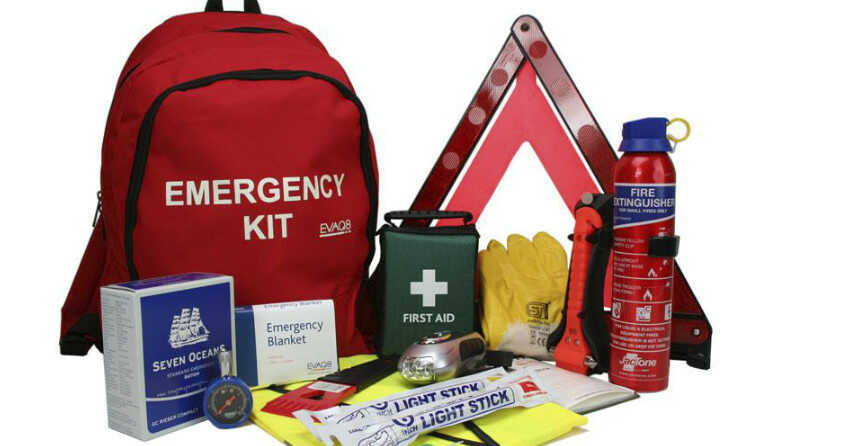
By: Economical Insurance
May 13, 2021
Some severe weather events (like hurricanes, wildfires and earthquakes) may require you to evacuate your home at a moment’s notice, while others (like snowstorms and extended power outages) could leave you stuck at home for days on end, potentially even without power or running water.
Having an emergency preparedness kit stored in a clean, dry, and accessible place can ensure you have everything your family needs on hand. Build your own kit by packing these essential supplies in a sturdy and easy-to-carry bag or two:
- Bottled water. Your emergency kit should contain at least three litres of water per person per day, with one litre for drinking and two litres for cleaning and hygiene. For example, if you have a family of three, you should pack nine litres of water a day for at least three days. If you have a family pet, pack an extra litre of water per day for them. This may seem like a lot of water, but when you consider that the average Canadian uses approximately 329 litres of water every day at home, it’s a drop in the bucket (no pun intended) and you’ll be thankful you have it.
- Non-perishable food (including pet food). Pack enough non-perishable food items like canned meats, protein bars, dry cereal, peanut butter, canned juices, and pet food to last each person or pet in your group at least three days. When buying food for your kit, be sure to buy items with a long shelf life, and check your kit every year to make sure your items haven’t expired.
- Manual can opener and eating utensils. If you include canned food items in your kit, a manual can opener is a must-have in addition to utensils like forks, spoons, and knives.
- Medication, medical supplies, and personal hygiene items. Pack extras of any items you can’t be without, including medications (and copies of your prescriptions), eyeglasses or contacts, pet medications, and any supplies you or your family members need for specific medical conditions. You’ll also want to pack portable personal hygiene items like toothbrushes, toothpaste, and soap.
- Important documents. Consider including copies of birth and marriage certificates, passports, health cards, wills, insurance policy documents, and a list of emergency contacts in your emergency kit. In addition to paper copies, consider saving electronic copies of important documents on an encrypted USB stick or in a secure, cloud-based account.
- Electronics, batteries, and chargers. Buy a crank- or battery-operated flashlight and radio for your kit, as they’ll be handy to have in the event of an extended power outage. It’s also important to pack extra batteries, an extra cellphone charger, and a pre-charged cellphone battery pack.
- Spare keys for your home and cars. Make extra copies of your home and vehicle keys to include in your kit. You may also want to consider leaving another set of keys with a trusted friend or family member.
- First aid kit. A standard first aid kit should include sterile gauze pads, adhesive tape, roller bandages, adhesive bandages, scissors, tweezers, safety pins, instant ice packs, and more. Check your local pharmacy for a prepackaged first aid kit to add to your emergency kit.
- Extra cash. In the event of a widespread power outage, stores (if they’re open) won’t be able to take credit cards or mobile payments, and you won’t be able to withdraw money from your bank. Keep extra cash in the form of small bills and coins in your kit in case you need to buy extra supplies.
- Safety whistle. If you’re lost and need help, you can use a safety whistle to alert others and assist search and rescue teams in finding you.
There are plenty more items that could help you out during an emergency evacuation or if you’re stuck at home, including sleeping bags, warm blankets, paper maps, and a change of clothing and footwear for each person in your home. Check out this list of additional items to pack in an emergency kit from the Canadian Red Cross to take yours to the next level.
What to do if your home is damaged because of a severe weather event
If you return home and find your home has been damaged because of a weather-related emergency, contact us or call.
The content in this article is for information purposes only and is not intended to be relied upon as professional or expert advice.
Looking for insurance? Request a quote online
This article was originally posted on
economical.com
